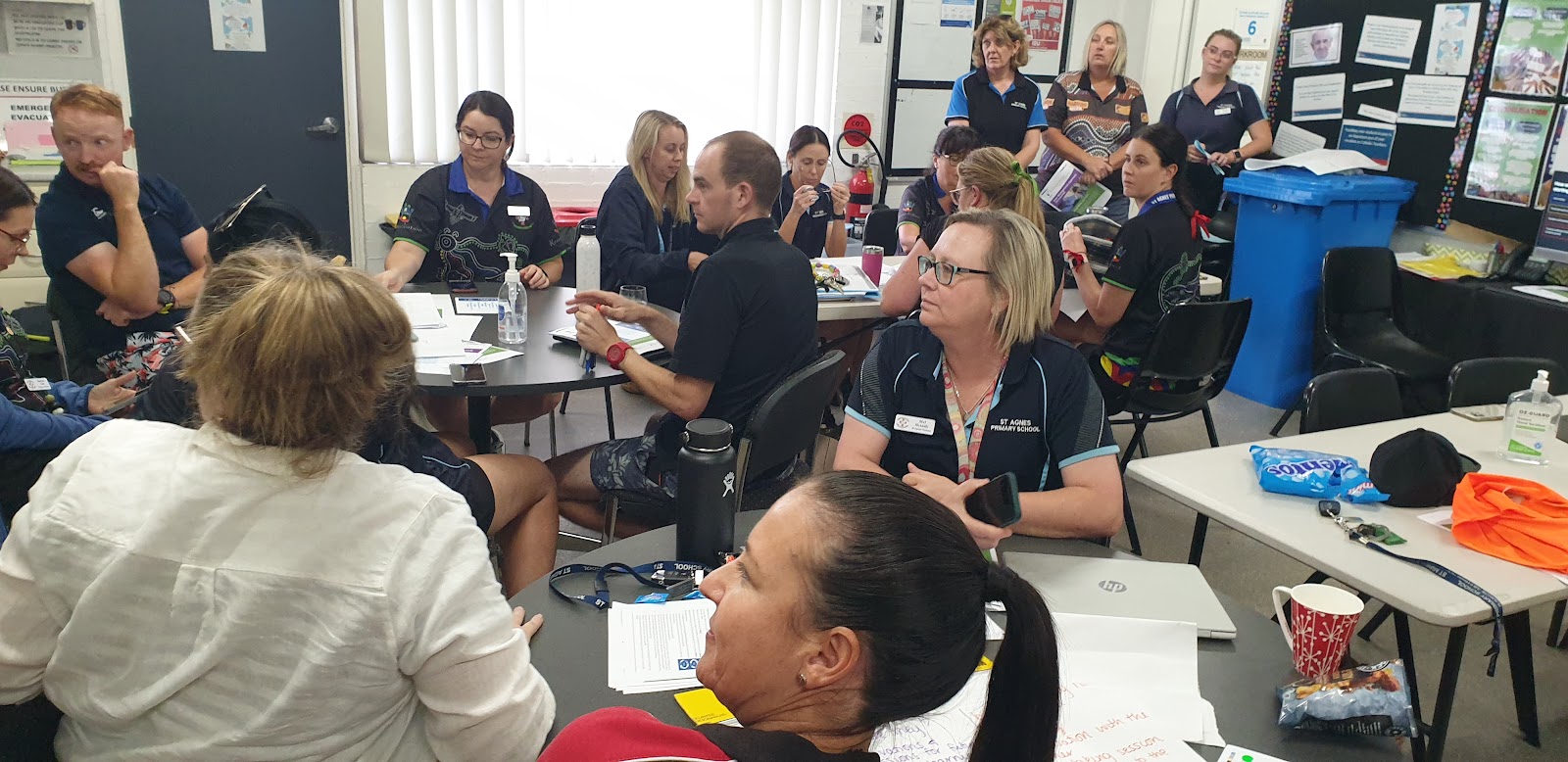Unpacking Parameter 1 Shared Beliefs and Understanding
In order to ensure all staff voice were heard the Learning Collaborative team used some intentional strategies. Each shared belief and understanding was rated twice. The first rating was around what is the current reality of our school and why. The second rating indicated how strongly do they believe in each statement and why? These reflections were collected and re-distributed. Staff were asked to read out each others reflections and stand along a corresponding continuum. Feedback received was that staff appreciated the number system and the anonymity of the exercise as it allowed for true and honest dialogue. The following attempts to capture the essence of the conversation around each of the shared beliefs and understandings.
Parameter 3: High expectations and early and ongoing intervention are essential. The range for this parameter for staff was from 7-10. Majority of the responses were 9-10. The conversation regarding intervention might need to be broken open further. Generally, staff voiced that there was evidence of this belief/understanding through the constant review of goals, use of assessment and rubrics to pinpoint where students are in the learning, utilizing this data to extend students beyond what they can do, believing in them and reminding of that daily. Staff felt there was evidence in the school of teachers working with students in small targeted groups, one-on-one student support and use of external personnel when needed. But this was evident in some Key Learning Areas more than others (such as reading). Some statements indicated staff saw themselves as intervention teachers in every moment (including in classroom learning and in the social context), providing quality differentiation for all (not just the low) and felt being flexible and vulnerable allowed them to improve in offering students their expertise. Some felt that high expectations based on individual need should be taken into consideration and that it was important to have specialized intervention teachers for the students who particularly sat at either end of the data spread.
Parameter 4: All teachers, leaders and students can articulate what they do and why they lead, teach and learn the way they do. This had the widest spread of data. For staff they felt that learning intentions (or WALT/WILF statements) aimed to help students articulate what they are learning and why but they questioned whether the language used is accessible by all and that students could see real life relevance and connections. Staff felt that teachers and leaders could articulate for themselves but this was a growing skill for students. A theme in responses was around the perception that teachers are leaders, leaders are teachers and the terms are interchangeable.




Comments
Post a Comment